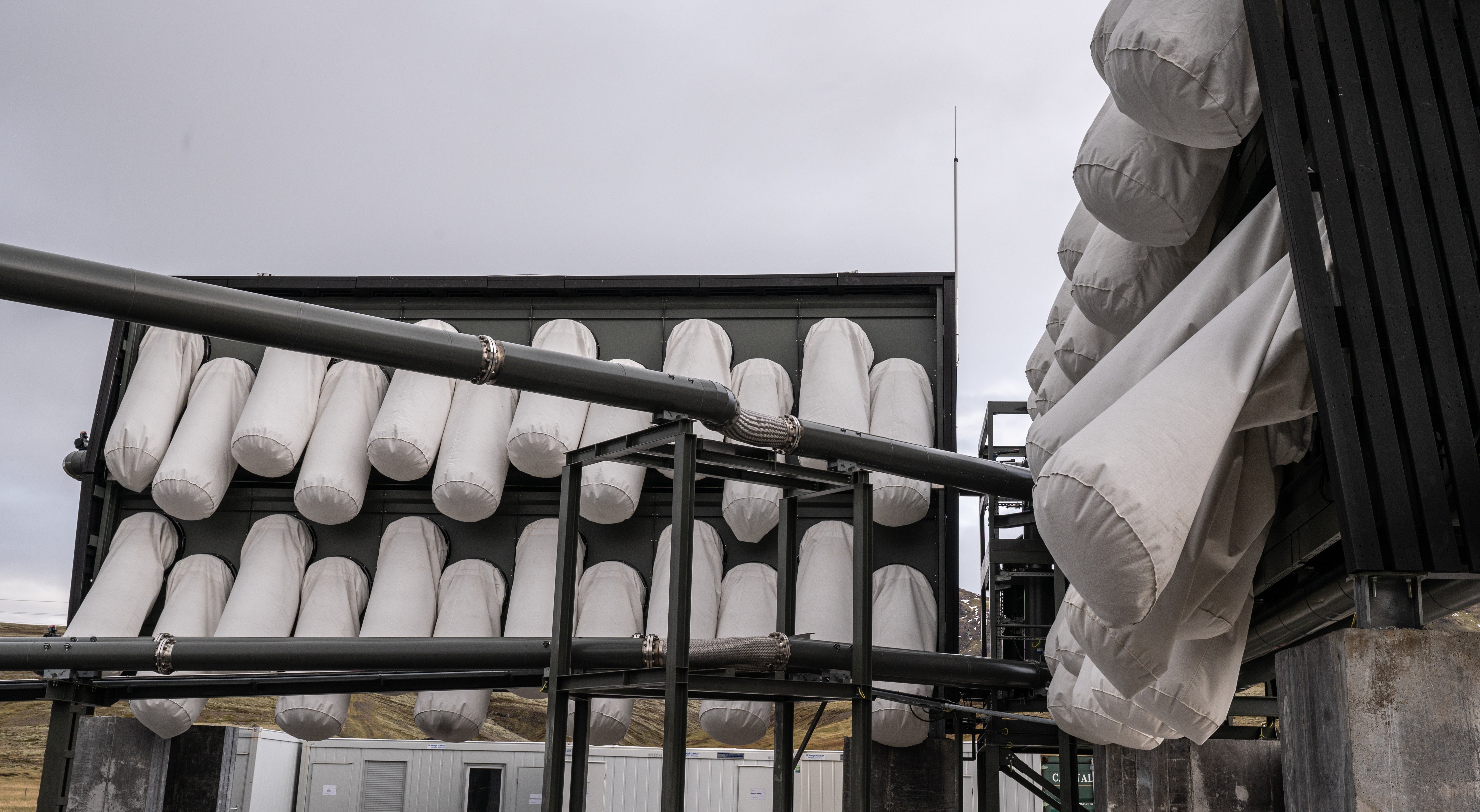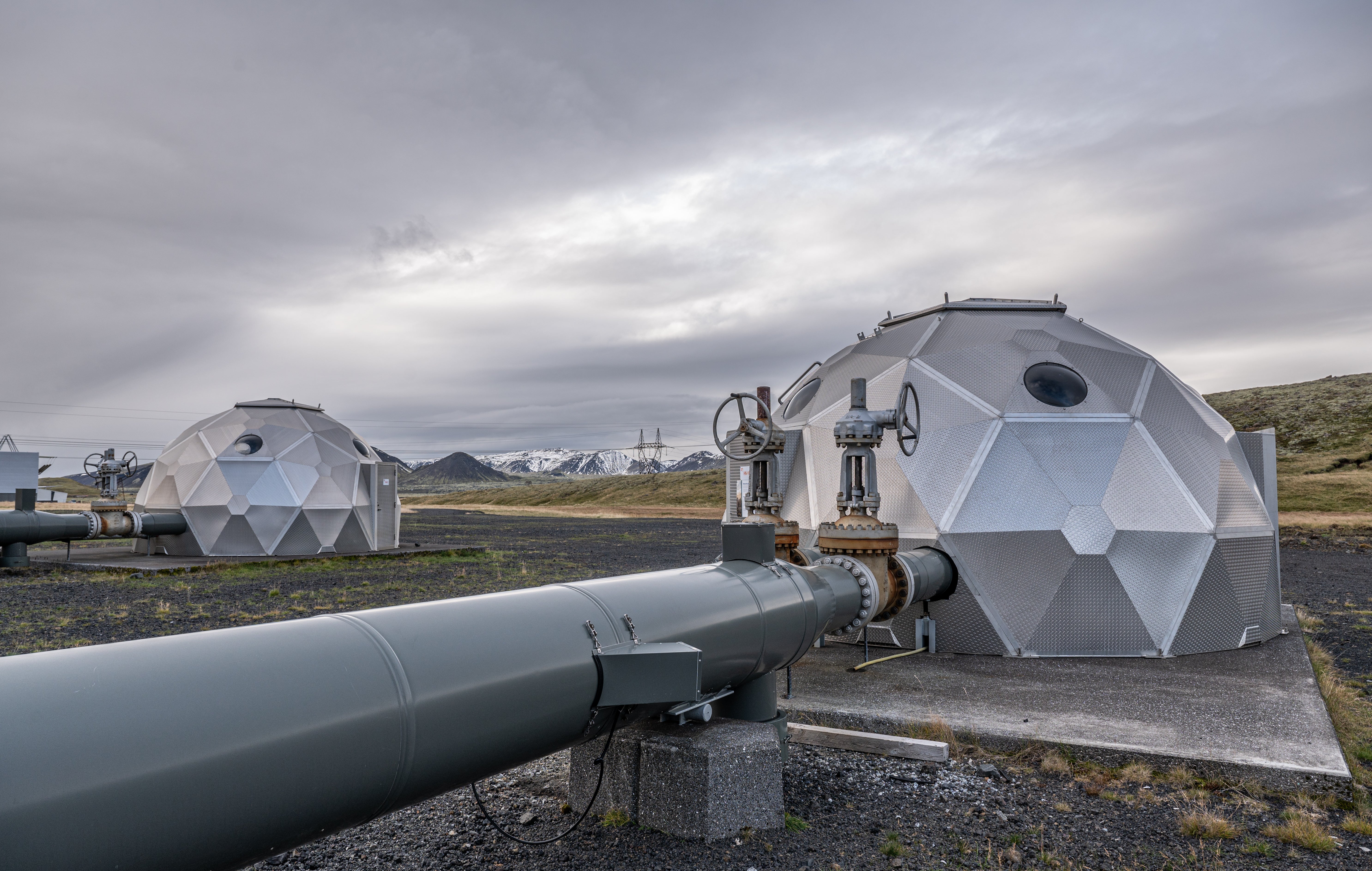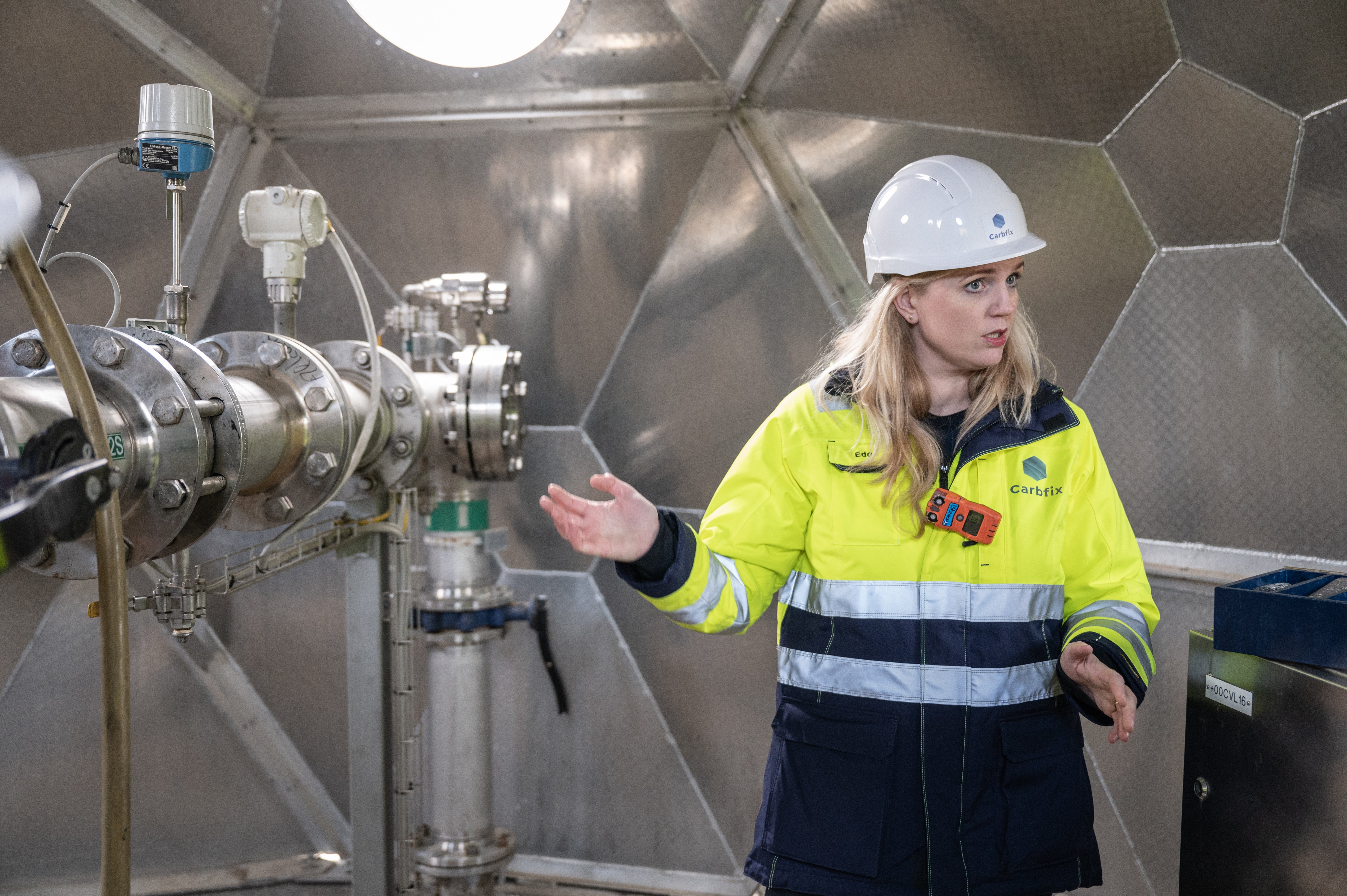The world-first experiment capturing CO2 from air and turning it to stone
Carbfix can turn CO2 captured from air into stone in under two years and hopes to one day help the UK rid itself of pollution. Climate Correspondent Daisy Dunne reports from southwest Iceland


According to Icelandic folklore, the country’s other-worldly rock formations are the remnants of pesky trolls caught out by the sun and turned to stone. It is in this country, against a backdrop of lava fields and billowing hot springs, that engineers are piloting a new technique to try to petrify another great pest: CO2.
On the site of the Hellisheidi Power Station, the world’s third-largest geothermal plant located in southwestern Iceland, a world-first experiment has started capturing CO2 straight from air and turning it to stone.
It is a collaboration between Swiss start-up Climeworks, which has created technology to suck CO2 from the atmosphere, and Iceland’s Carbfix, a company that has developed a technique to turn CO2 to stone in less than two years.
Climeworks’ “direct air capture” machine, known as Orca, works by drawing in air using giant fans and fabric tubes. This air is brought into contact with a chemical filter that can selectively capture CO2 while releasing other gases such as nitrogen and oxygen. The filter system is then heated to around 100C to obtain CO2 as a pure gas.
“This is a fairly difficult and energy-intensive process,” explains Dr Kari Helgason, an astrophysicist and research and innovation head at Carbfix.
“Only four of every 10,000 molecules in the atmosphere are CO2 molecules. [It’s like] if your kids spilt all of their Lego on the floor, and you’re looking for four particular Lego chips out of 10,000.”
Once the CO2 is captured, Carbfix begins the process of turning it to stone using what it describes as a “giant Sodastream machine”. The CO2 gas is mixed with water and then injected deep into basalt rock, which contains the elements needed for the mineralisation process to take place. The energy required for the entire process comes from the nearby geothermal power plant.

The project is novel but still operating on a small scale. Orca is capable of sucking up 4,000 tonnes of CO2 a year – just a fraction of global emissions, which totalled 31.5 billion tonnes last year. Carbfix currently gets the majority of its CO2 needed for mineralisation from the nearby geothermal plant, which creates small amounts of the gas as it generates power.
Though the project is so far only making a tiny dent in global emissions, its benefactors argue that such techniques have an important role in tackling the climate crisis.
Cutting the rate at which the world is releasing emissions as fast as possible will be crucial to tackling global heating. But to have the greatest chance of meeting the world’s aspiration of limiting temperature rise to 1.5C above pre-industrial levels, scientists say the world will also have to scale up techniques for removing CO2 from the atmosphere, which can range from tree planting and habitat restoration to pulling CO2 directly out of the air using machines.
Climeworks’s direct air capture machine could offer some benefits over other types of CO2 removal methods, says Dr Rob Bellamy, a scientist studying climate technologies at the University of Manchester.
One is that it takes up a relatively small amount of land. Orca is roughly the size of two shipping containers.
“It side-steps some of the concerns around other CO2 removal techniques like tree planting when it comes to land-use conflicts,” he tells The Independent. “This is because it can operate on a much smaller spatial scale.”
It will be like an Amazon pick-up package service. You capture the CO2 yourself and we come and pick it up and store it for you
For newly planted trees to remove the same amount of CO2 as Orca, a much larger area of land would be needed – potentially raising risks for food production and other types of land use.
And Carbfix argue that their mineralisation technique offers an advantage over other ways of storing CO2, which includes simply injecting the gas into empty oil wells under the sea. This is because, once mineralised, there is no risk that the captured CO2 will escape back into the atmosphere, doing away with the need for lengthy monitoring programmes.
But there are drawbacks. A major one is that the cost of capturing CO2 using a machine like Orca is still prohibitively high. In comparison, planting trees or restoring habitats is relatively cheap and does not require technological innovation. Others argue that more “natural” techniques, such as habitat restoration, come with greater co-benefits for wildlife and people.
There are also social concerns. Some have argued that developing technologies to remove CO2 from air might lead to misconceptions about there being a “quick fix” to the climate crisis. This might, in turn, lead to certain countries stalling on their commitments to rapidly reduce their greenhouse gas emissions.
This is an argument that Carbfix’s CEO, Dr Edda Sif Pind Aradottir, fiercely opposes.

“I think this is an excuse to not take action. We are simply running out of time,” she tells The Independent.
“We don’t see implementing our technology in such a way that coal-fired power plants in Europe, for example, will extend their lifetime. We want to focus on industries that are hard to abate [decarbonise] where this could be the only solution.”
Carbfix views itself as just one tool in a wide arsenal needed to effectively tackle the climate crisis, including policies to spur rapid emissions reductions and techniques to boost natural carbon stores, she adds.
The company is currently seeking the funds to expand. Over the next few years, it hopes to establish a system for bringing CO2 created in European countries, including the UK, to Iceland where it can be turned into stone.
“It will be like an Amazon pick-up package service,” says Dr Helgason. “You capture the CO2 yourself and we come and pick it up and store it for you.”
The ultimate goal is to do everything possible to take more immediate action against the climate crisis, adds Dr Aradottir.
“We’ve been seeing our glaciers retreating since I was a little girl,” she says.
“It’s also for my kids. In the end, they will have to face the burden if we don’t act now. I feel it’s our responsibility to take as much action as we can now so their lives will be better for it.”
Daisy’s travel costs were covered by Business Iceland
Join our commenting forum
Join thought-provoking conversations, follow other Independent readers and see their replies
Comments
Bookmark popover
Removed from bookmarks